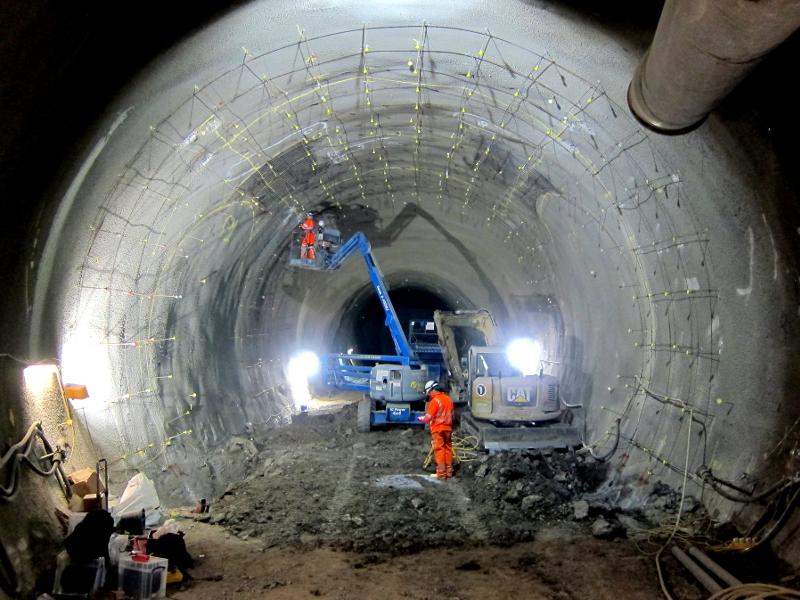
Submitted by Administrator on Mon, 27/10/2014 - 11:52
CSIC has completed the first ever deployment of distributed fibre optics to monitor sprayed concrete tunnel linings at Crossrail’s Liverpool Street station.
CSIC engineers have installed innovative distributed fibre optic sensing technology in sprayed concrete lining (SCL) at the Crossrail site. This is the first deployment of its kind in the UK – until now this monitoring technology had not been utilised to monitor these types of tunnel linings.
Tens of kilometres of new utilities and transportation tunnels are currently being dug under London. Large tunnels, like the 11-meter diameter Crossrail platform tunnels, are often excavated using mechanical diggers. Several layers of steel fibre reinforced concrete are then sprayed at high pressure onto the freshly exposed ground to stabilise it and to provide permanent structural support.
Although the concrete linings are modelled using finite element software, very little field data relating to the actual strains sustained by the linings is available to calibrate these models. Consequently, a conservative approach often has to be taken in the design of SCL to account for the uncertainty in loading and response information, particularly in the vicinity of openings such as cross-passages.
The benefit of CSIC’s new monitoring technology lies in the fact that tens of kilometres of optic fibre can be sensed at once to obtain a continuous, distributed strain measurement, providing relatively cheap but highly effective monitoring systems.
CSIC’s co-investigator Dr Mohammed Elfshafie said: “This is the first time such a novel system has been used to measure the strain induced by the construction of cross-passages in SCL. The monitoring is expected to shed light on the strain profile within the tunnel lining as cross-passages are excavated on either side of it.”
The distributed fibre optic instrumentation has been embedded within the SCL, at the interface between the primary lining and the thickening layer, to enable the measurement of hoop and longitudinal strain in the vicinity of the cross-passages.
The SCL was monitored with the embedded fibre optic cables during the various stages of the excavation of the cross-passages, between June and August 2014, and the data is now being analysed in detail by CSIC Engineers. Preliminary results indicate that the effect of the cross-passage excavation extends to a much smaller area than previously thought.
CSIC Research Associate, Dr Nicky de Battista, said: “The redistribution of load that occurs in SCL when openings are made in the tunnel walls is not fully understood. For this reason, SCL tends to be over-designed to allow for various uncertainties. As a world leader in the field of novel sensing, CSIC is working with Crossrail to monitor the sprayed concrete tunnel lining at Liverpool Street station using distributed fibre optic sensors embedded within the concrete. The monitoring system will allow finite element models to be calibrated with real structural performance data that is not currently available with any other technology. This could potentially lead to reduction in SCL thickness, with massive cost savings for clients in terms of time, material and labour.”
For more information contact: Mohammed Elshafie: me254@cam.ac.uk; Nicky de Battista: n.debattista@eng.cam.ac.uk
